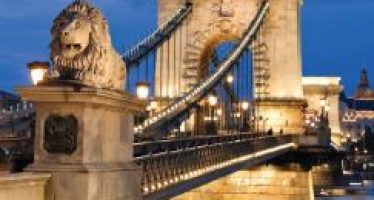The IMF on Prospects for Growth: Latin America & Caribbean

Uruguay
Growth in Latin America and the Caribbean is set to pick up from 3 percent in 2012 to 3½ percent in 2013, supported by stronger external demand, favorable financing conditions, sand the effects of earlier policy easing in some countries, according to the International Monetary Fund.
In its Regional Economic Outlook for the Western Hemisphere, released on May 6 in Montevideo, Uruguay, the IMF said that external risks to the near-term outlook have receded. Policy actions in the euro area and the United States have removed immediate threats to global growth and financial stability, the report said.
That said, in the United States, failure to replace the automatic fiscal spending cuts (“the sequester”) with more backloaded measures before the start of the next fiscal year (in October) would affect growth in late 2013 and beyond.
Lower U.S. growth would have a negative impact on the region, particularly in Mexico and Central America, where links through trade and remittances are the strongest.
Mounting Risks
According to the report, medium-term risks for Latin America remain tilted to the downside. The key risk is a reversal of the favorable tailwinds of easy financing conditions and strong commodity prices that have prevailed since 2010.
The region would be particularly affected if a sharp slowdown in China or other key economies triggers a drop in commodity prices.
Another risk is that lack of progress in addressing the medium-term fiscal challenges in key advanced economies leads to a sharp increase in sovereign and corporate risk premiums, with negative impact on global growth.
Domestically, the risk of a deterioration of external and financial sector balance sheets has increased in some countries, the report said.
Current account balances have weakened in recent years, and asset prices are on the rise. Credit growth has moderated, but remains high in a number of countries.
Responding to Risks
The report reaffirmed its earlier message that countries in the region should take advantage of the current favorable economic conditions to build a strong foundation for sustained growth in the future. Policy priorities include building stronger fiscal buffers, improving policy frameworks, and pressing ahead with structural reforms to increase productivity and potential growth.
Growth in the financially-integrated economies in 2013 is projected at about 4¼ percent. For these countries, the IMF pointed out that the key policy priorities are to strengthen public finances and protect financial sector stability. Stronger public balance sheets would help ease pressure on capacity constraints and arrest the widening of current account deficits.
Growth in the other commodity exporters is expected to increase to 4.6 percent in 2013, from 3.3 percent in 2012. However, in the large energy exporters (Bolivia, Ecuador, and Venezuela), growth is projected to moderate. The IMF said these countries would benefit from saving a much larger share of their commodity revenues.
Average growth in Central America is expected to remain close to potential in 2013. Looking ahead, the report said that gradual tightening of fiscal policy in these countries would be necessary to reduce fiscal and external imbalances and ensure debt sustainability.
In much of the Caribbean, high debt and weak competitiveness will continue to constrain growth. These economies are projected to grow by about 1¼ percent in 2013 (from ½ percent in 2012), as external demand strengthens gradually. The key challenge for these countries remain broadly unchanged—reducing high public debt, containing external imbalances, and reducing financial sector vulnerabilities.
The May 2013 Regional Economic Outlook features three analytical chapters dealing with the challenges of sustaining growth and strengthening balance sheets. Specifically, the chapters assess the region’s growth potential, the impact of changes in external conditions on public and external debt dynamics, and the use of the windfall from the recent terms-of-trade boom.
You may have an interest in also reading…
MIGA (World Bank) – A New Boon for Emerging-Market Financing: Achieving Investment-Grade Bonds with MIGA’s Credit Enhancement
Many investors, lenders, and government officials are familiar with the Multilateral Investment Guarantee Agency (MIGA) of the World Bank Group.
2012 CFI Top 100 Emerging Markets Companies’ Nominations
The 2011 CFI Top 100 Emerging Market Companies were compiled by using the nominations and the votes from CFI’s subscriber
Mozambique Gets US$110 Million from World Bank to Improve Business Environment, Public Financial Management, and Social Protection
WASHINGTON — The World Bank Board of Executive Directors approved today US$110 million to support the Government of Mozambique’s State Budget



















































































